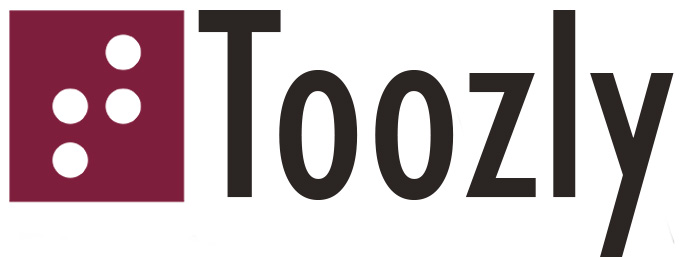So you have never employed a person with a disability and you’ve always rejected it because you believe:
- That the person will pose a risk at your worksite
- It will take up more of your time in supporting this person
- That it will be too costly to your business in terms of lost productivity
- The person will not fit into your work culture
- The person won’t have the skills and talent to do the job
on Friday, 19 February 2016.
Posted in Toozly Tips
Whilst most designers of the accessible built environment are usually highly qualified, they are not in the main disabled, i.e. they don't use a wheelchair or other assistive technology on a regular basis. Maybe designers, architects and builders could employ qualified disabled people as advisors in the design process of the built environment, rather than falling into the category of well-meaning able-bodied people who think they know what disabled people want and need.
Some examples of where a disabled persons input would be valuable:
A ramp to allow access for wheelchairs has to be built to a minimum slope ratio of 1:14 in NSW to enable those who use self-propelled manual wheelchairs to go up or down on their own. Going up can still be hard work, so we don't need a ramp with a thick pile carpet on it. Preferably there should be no carpet at all.
on Friday, 02 October 2015.
Posted in Toozly Reader's Articles
Just like an applicant without a disability, when it comes to getting promotions you’ll need to demonstrate that you’ve taken steps to improve your employability.
Often that promotion means going for another job with a rival company or facing an internal panel. Whatever the scenario though, you’ll be faced with that whole interview thing again. So make sure you’re prepared by boosting your resume prior to applying for that promotion.
How do you do that?
Well, trying some of the following certainly wouldn’t be a bad start:
Consider Doing A Course Or Some Training Probably the most important step in terms of getting promotion is to undertake some form of professional development. For instance, if you currently work as a PA (personal assistant) and you’ve always fancied marketing then it would be very much in your best interest to take a night class or day release certificate in Marketing Practice. Ask your current employer what courses would give you new skills and capabilities most desired in your current or future roles. Check out the following websites for information on training in your state:
Find a Free Work Placement
But what if you don’t already have a job and can’t afford to take up night classes? Another way to impress an employer would be to undertake some sort of work in the same field (i.e. as an intern). This shows your commitment as well as getting you brownie points for experience and no doubt, networking possibilities.
on Sunday, 26 April 2015.
Posted in Toozly Tips
If you have a disability and are keen on getting into the workforce, remaining in your job, or even looking to move on to bigger things work-wise, then there are several services and online resources available to support you.
Job Access
www.jobaccess.gov.au is an excellent resource for employers since it lets them know what financial assistance is available for them were they to employ an individual with a disability. This includes funding for equipment such as access ramps or adaptive technology to support someone with a sensory impairment.
It is a common misconception that employing a person with a disability will be costly and time consuming. In reality, Job Access staff are very helpful and will assist you to find suitable tools and adaptive technology for a staff member with a disability and will fund the purchase of those tools or modifications – taking the hard work and cost out of the equation.
Here’s a list of some of the Government schemes and wage subsidies available:
Wage Subsidy Scheme
An employer can access government funding of $1,500-$10,000 if he/she hires an individual with a disability through an Employment Service Provider and that person works for at least eight hours a week. The employee must be employed for at least 13 weeks and anticipate a further 13 weeks of employment (or six weeks if the job is seasonal). Meanwhile, the job itself must be waged and not commission-only or gained via subcontracting.
http://www.employment.gov.au/wage-subsidy-scheme
on Sunday, 26 April 2015.
Posted in Toozly Tips
Most people get nervous prior to an interview. It’s practically human nature to feel at least a little anxious – unless you’re incredibly confident and sure of yourself (and yes, those individuals do exist). However, most of us fall in to the first category. Thankfully there are, however, ways to lessen our stress. Some of it is to do with preparing beforehand, others to calm ourselves prior to and during the interview. We’ve categorized and made a list of them right here. See what you think…
Days Before The Interview
Try and anticipate the kind of questions you’ll be asked and jot down answers for them. Common questions centre on why you want the job and why you think you’ll be good at it. There’ll also be questions based on your CV ie why did you move from one particular job to another etc. A lot of our anxieties stem from fear of the unknown or from not being in control of a situation – so role playing and anticipating interview questions will go a long way towards reducing your job interview anxiety.
Other tips include:
- Make sure your referees are aware you’ve applied for a post and listed them as a referee. Give them a call and let them know about the job – send them the job listing and if you can, discuss key achievements or experiences you want them to mention.
- Come up with at least two questions you can ask the interviewer (one about the specific job, another the company).
- Read through the company website (especially the news and press release section) and focus on the department you’ve applied for (if it’s a large organization). Mentioning company specifics will show the interviewer you’re interested in the job and have done your homework ! eg. “I saw on your website that you’re about to open a new store in the CBD. Will this role be involved with the setup of that store ?”
- If you’ve been offered an interview and need any special help when you get there, ring the HR department or the individual who sent the letter and let them know ahead of time.
- www.whereis.com.au or Google Maps on your phone or computer are good places to start to confirm the interview location and how to get there. For public transport advice call 131500 or visit www.131500.com.au
- If you need help with interview clothing make sure you mention this to your Employment Service Provider and ask them if they can help you with the costs of these items. They can also refer you to organisations that provide free stylish and new clothing for jobseekers looking for work.
- Eg. see Dress For Success: (Sydney, Melbourne, Brisbane, Adelaide, & Perth), https://sydney.dressforsuccess.org/
on Sunday, 26 April 2015.
Posted in Toozly Tips

